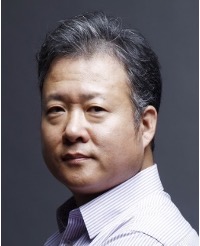Molecular Dynamics Simulation
of High Strain Rate Deformation of Titanium Based Alloys
Dongsheng Xu1*, Zhichao Meng1, Yan
He2, Qili Bao3, Aidong Tu4, Hao Wang1,
Rui Yang1
1 Institute of Metal Research, Chinese Academy
of Sciences, Shenyang, 110016, China
2 Shenyang Normal University, Shenyang, China
3 AECC Commercial Aircraft Engines, Co. Ltd,
China
4 Hunan Goldsky Titanium Industry Technology
Co. Ltd, China
ABSTRACT: High strain rate deformations
may be involved in many process during the fabrication and service condition,
such as machining or surface treatment during fabrication, and even impact by
small object during service, the mechanical behavior, deformation and crack
nucleation mechanism are sometimes found different form conventional
deformation, however, due to the high strain rate of the deformation, the
detailed process and mechanisms are difficult to investigate experimentally.
Molecular dynamics simulations are carried out for titanium and titanium
intermetallic compounds in the last few years to study the high strain rate
deformation, and to clarify the variation of the deformation mechanism and
their relations with deformation condition. It was found that the deformation
characteristics are sensitive to the loading direction, and some new
deformation mechanism related with deformation twinning and dislocation
generation were found and will be discussed.
Keywords: Molecular dynamics; high strain rate; deformation mechanism; twin; dipole transformation.

Dongsheng Xu is Professor of Materials Science and Engineering and Leader of Computational Design of High Temperature Structural Materials Group in the Institute of Metal Research Institute, Chinese Academy of Sciences, and the Univeristy of Science and Technology of China. He is Deputy Director of the Computational Materials Sciences Chapter, and Deputy Secretary of Materials Genome Engineering Chapter of Chinese Materials Research Society, and Deputy Director of Light Metals Committee of National Materials and Devices Network, etc. He work mainly on design and optimization of new alloys and processes, especially for titanium alloys, using Materials Genome approach, i.e., integrating experimental work with multiscale modeling on electronic, atomistic, microstructural and macro level to understand the alloying effects, microstructure evolution, various processing and mechanical behavior of structural materials. With 100+ papers and 8 patents, and 33 Ph.D. Students, 12 M.Sc. Students, 2 Postdocs supervised.